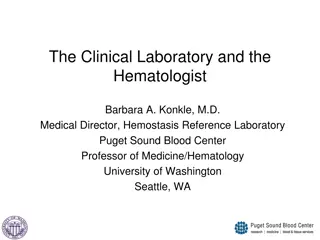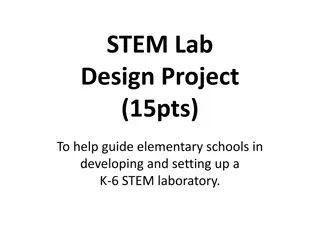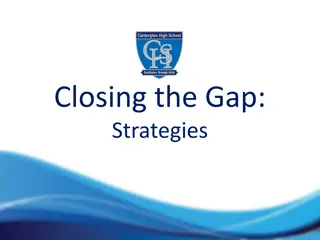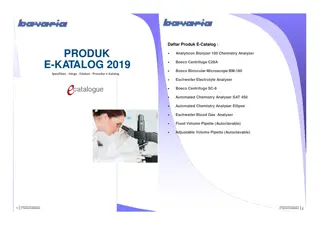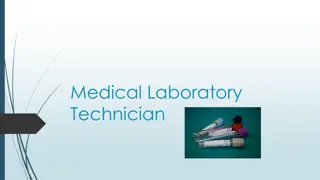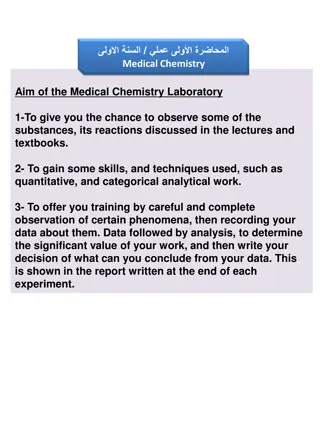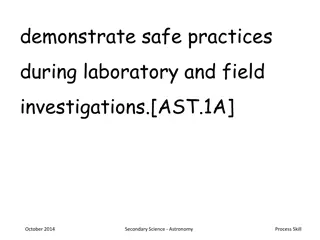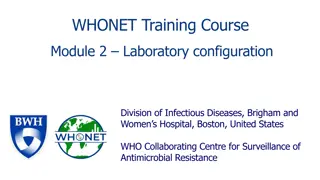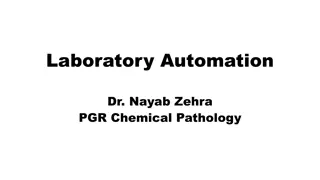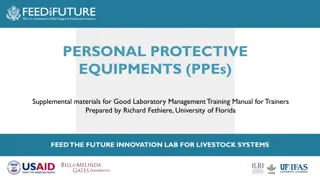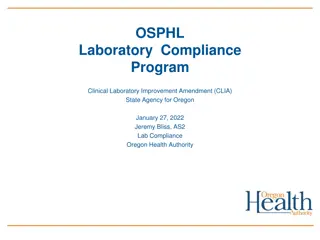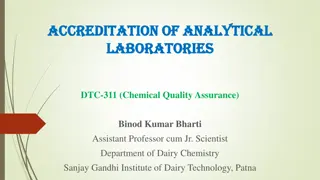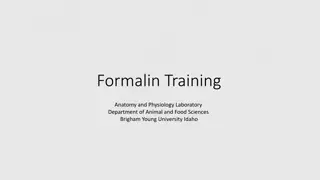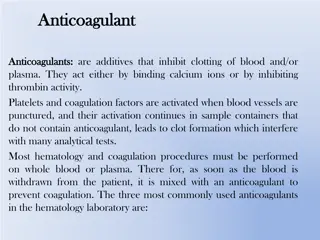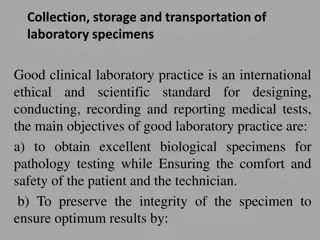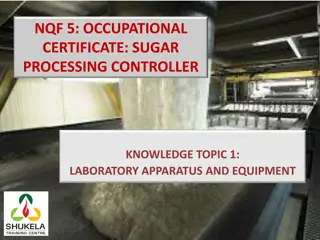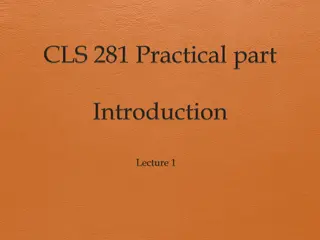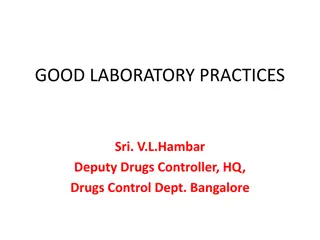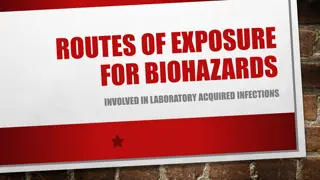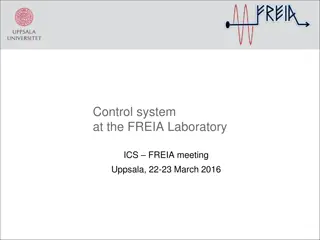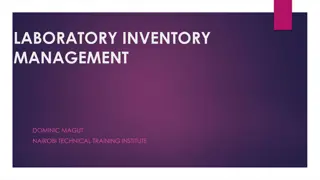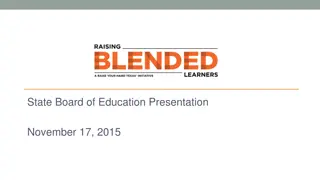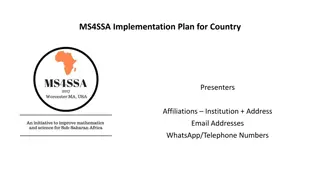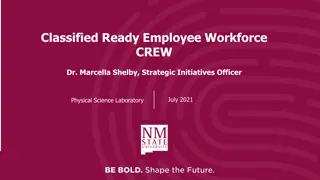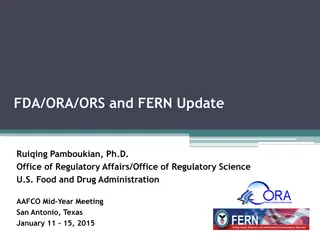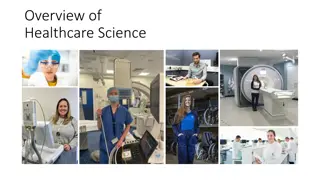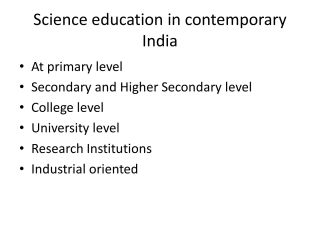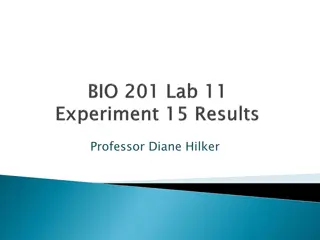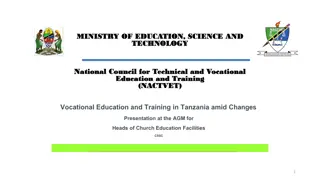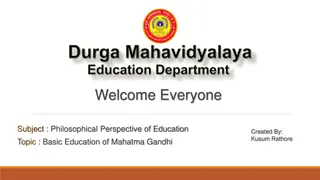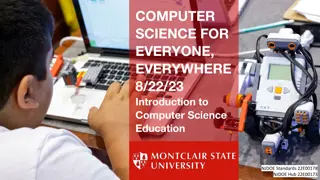Enhancing Science Education Through Laboratory Learning Activities
Explore the importance of laboratory learning activities (LLAs) in science education, focusing on contemporary science representation, inquiry skills, and conceptual learning. Discover the benefits of inquiry-based learning, teaching science inquiry skills, and incorporating more inquiry-based learning into LLAs. Learn about the key features of inquiry that positively impact student learning and the components of scientific inquiry essential for becoming a proficient scientist.
Download Presentation

Please find below an Image/Link to download the presentation.
The content on the website is provided AS IS for your information and personal use only. It may not be sold, licensed, or shared on other websites without obtaining consent from the author. Download presentation by click this link. If you encounter any issues during the download, it is possible that the publisher has removed the file from their server.
E N D
Presentation Transcript
Re-crafting Science Activities Understanding the Laboratory Learning Activity (LLA) Dr Peta White Deakin University School of Education Peta.white@deakin.edu.au
Things we pay attention to in designing high quality LLAs Contemporary Science Representation Construction Approach Inquiry Science learning process Conceptual learning Assessment of Inquiry Skills (teaching skills) 2
Doing what Scientists actually do Science is everywhere! IFM Module
Reasons for inquiry based learning Connect to real life and students experiences Connect to contemporary science To use and develop inquiry skills To develop science understandings To engage with learning outcomes in the curriculum 4
How do we teach the science inquiry skills? 5
How can we incorporate more science inquiry and skill teaching and learning into Laboratory Learning Activities? And why would we want to? 6
Features of inquiry which have a positive impact on students learning 1.Teachers who engage their students in generating, developing, testing, and justifying explanations 2.Teachers who integrate content (science concepts), procedural (skills) and epistemological (Nature of Science) components 3.Teachers who provide appropriate guidance and support for their students. (Furtak, Seidel, Iverson, & Briggs, 2012) 7
The components of scientific inquiry Scientists need to be able to do certain things these tools of the trade are the skills necessary for being a scientist (Jerner Martin, 2009) *observing *classifying *communicating *measuring *predicting *inferring *identifying and controlling variables *formulating and testing hypotheses *interpreting data *defining operationally *experimenting *constructing models
The 6 Essential Features of Inquiry 1. Learner engages in scientifically oriented questions. 2. Learner gives priority to data/evidence in responding to questions. 3. Learner analyses data 4. Learner formulates explanations based on analysis. 5. Learner connects explanations to scientific knowledge. 6. Learner communicates and justifies explanations.) (National Research Council, 2000: modified in Towns et al, 2008, 2009)
Levels of scaffolding to support learning Confirmation Elements Structured Inquiry Guided Inquiry Open Inquiry Authentic Inquiry No question Given by teacher Sharped by student Selected by student Posed by student Question Evidence No evidence Given evidence Given possible evidence Guided to collect evidence Determines what to collect No analysis Told how to analyse Given possible ways of analysing Guided to analyse Determines how to analyse Analyses data No explanation Teacher provides explanation Given possible explanations Guided in process of explanation Formulates explanation Formulates explanation Connects explanation to scientific knowledge No connection to knowledge Teacher provides connection Given possible connections/ theories Directed to sources of knowledge Independently explores knowledge Communicates & justifies findings No communication Told how to communicate Provided with guidelines for communication Coached in methods of communication Chooses how to communicate
An example of scaffolding .. Further the causes of water hardening were investigated, a method of measuring hardness was devised and then various water softening techniques were investigated. As the students progressed through the 8 practicals the information was continuously related back to them and their environment. They had to document an account of each prac and were given less and less guidance as they progressed. Practical 1 was basically a copying exercise from the white board but by number 8 they had to do and write up the practical completely on their own.
Inquiry scaffold (building blocks) 4 Authentic Inquiry 3 Open Inquiry 2 Guided Inquiry Structured Inquiry 1 0 Confirmation Communicate Connect Data Question Explain Analysis
Authentic Inquiry 4 Open Inquiry 3 2 Guided Inquiry Structured Inquiry No communication 1 0 Confirmation Communicate Connect Data Question Explain Analysis
Authentic Inquiry 4 Open Inquiry 3 Learner told steps for communication 2 Guided Inquiry Structured Inquiry 1 0 Confirmation Communicate Connect Data Question Explain Analysis
Authentic Inquiry 4 Open Inquiry 3 Teacher provides question 2 Guided Inquiry Structured Inquiry 1 0 Confirmation Communicate Connect Data Question Explain Analysis
Authentic Inquiry 4 Learner selects question Open Inquiry 3 2 Guided Inquiry Structured Inquiry 1 0 Confirmation Communicate Connect Data Question Explain Analysis
Aspects of Inquiry (NSF) 0 1 2 3 4 1. Learner engages in scientifically oriented questions and predictions. No Teacher Learner Learner Learner poses question question provides question sharpens question selects question No Teacher provides plan Teacher discusses possible plans Learner guided while planning Learner 2. Learner plans how to carry out investigation and collect data. planning determines plan Learner guided while conducting and recording Teacher conducts Learner told how to conduct and record Learner sharpens plan and conducts Learner 3. Learner conducts investigation, recording data. conducts and records Learner analyses data, identifying trends Teacher analyses Learner told how to analyse data Teacher discusses possible analyses Learner guided in analysing 4. Learner processes and analyses data. Teacher discusses possible reasoning and links Learner guided in reasoning to formulate conclusion Learner guided in justifying conclusions and communicating 5. Learner uses scientific reasoning and problem solving to link evidence to science concepts. No Teacher provides reasoning and links Learner reasons to formulate conclusion problem solving Learner justifies conclusions and communicates 6. Learner communicates, justifies findings based on evidence and reasoning. No Teacher Learner conclusion writes conclusions writes conclusions Prescription Confirmation Structured Inquiry Guided Inquiry Open Inquiry National Research Council (2000). Inquiry and the national science education standards: A guide for teaching and learning. Washington DC: National Academic Press. Bruck, L. B., Bretz, S. L., & Towns, M. H. (2008). Characterizing the level of Inquiry in the undergraduate laboratory. Journal of College Science Teaching, 38(1), 52-58.
Aspects of Inquiry (Vic Curric 7-8) Curriculum outcome (slightly paraphrased) Prescription Confirmation Structured Inquiry Guided Inquiry Open Inquiry No Teacher Learner Learner Learner poses question 1. Identify questions (VCSIS107) question provides question sharpens question selects question No Teacher provides plan Teacher discusses possible plans Learner guided while planning Learner 2. Plan and conduct investigation (VCSIS108) planning determines plan Learner guided while conducting and recording Teacher selects Learner told how to select and use Learner sharpens selection and use Learner 3. In fair tests, select equipment to collect data (VCSIS109) conducts and records Learner analyses data, identifying trends 4. Construct and use representations, to record and summarise data (VCSIS110) Teacher analyses Learner told how to analyse data Teacher discusses possible analyses Learner guided in analysing 5. Identify relationships, evaluate claims and draw conclusions (VCSIS111) No Teacher draws conclusions Teacher discusses possible conclusions Learner guided in drawing conclusions Learner reasons to formulate conclusion problem solving No Teacher evaluates Teacher discusses possible evaluation Learner guided in evaluation Learner evaluates conclusions 6. Reflect on the method used and evaluate data (VCSIS112) evaluation Learner guided in justifying conclusions and communicating Learner justifies conclusions and communicates 7. Communicate ideas, findings and solutions to problems , using scientific language (VCSIS113) No Teacher summarises and communicates Learner communicates communication Prescription Confirmation Structured Inquiry Guided Inquiry Open Inquiry National Research Council (2000). Inquiry and the national science education standards: A guide for teaching and learning. Washington DC: National Academic Press. Bruck, L. B., Bretz, S. L., & Towns, M. H. (2008). Characterizing the level of Inquiry in the undergraduate laboratory. Journal of College Science Teaching, 38(1), 52-58. Adapted for Victorian Curriculum by Lim, K. F. (2016), unpublished.
Aspects of Inquiry (Vic Curric 9-10) Curriculum outcome (slightly paraphrased) Prescription Confirmation Structured Inquiry Guided Inquiry Open Inquiry No Teacher Learner Learner Learner poses question 1. Formulate questions or hypotheses (VCSIS134) question provides question sharpens question selects question 2. Independently plan, select and use appropriate investigation (VCSIS135) No Teacher provides plan Teacher discusses possible plans Learner guided while planning Learner planning determines plan Learner guided while conducting and recording 3. Select and use appropriate equipment and collect and record data (VCSIS136) Teacher selects Learner told how to select and use Learner sharpens selection and use Learner conducts and records Learner analyses data, identifying trends 4. Construct and use representations, to record and summarise data (VCSIS137) Teacher analyses Learner told how to analyse data Teacher discusses possible analyses Learner guided in analysing 5. Analyse patterns and trends in data, and drawing conclusions (VCSIS138) No Teacher draws conclusions Teacher discusses possible conclusions Learner guided in drawing conclusions Learner reasons to formulate conclusion problem solving 6. Use knowledge of scientific concepts to evaluate conclusions (VCSIS139) No Teacher evaluates Teacher discusses possible evaluation Learner guided in evaluation Learner evaluates conclusions evaluation Learner guided in justifying conclusions and communicating Learner justifies conclusions and communicates 7. Communicate scientific ideas and information, evidence-based arguments, using scientific language (VCSIS140) No Teacher summarises and communicates Learner communicates communication Prescription Confirmation Structured Inquiry Guided Inquiry Open Inquiry National Research Council (2000). Inquiry and the national science education standards: A guide for teaching and learning. Washington DC: National Academic Press. Bruck, L. B., Bretz, S. L., & Towns, M. H. (2008). Characterizing the level of Inquiry in the undergraduate laboratory. Journal of College Science Teaching, 38(1), 52-58. Adapted for Victorian Curriculum by Lim, K. F. (2016), unpublished.
Building towards inquiry Making more engaging experiments is not about throwing out experiments and starting again. Analyse the current level of inquiry in your experiments. Identify where you want to increase inquiry. Re-work these aspects of your experiment. Test, trial, and revise again.
How to use the Inquiry Scaffold Tool plan inquiry skills teaching and learning map inquiry skills through activities map inquiry skills across units / years







